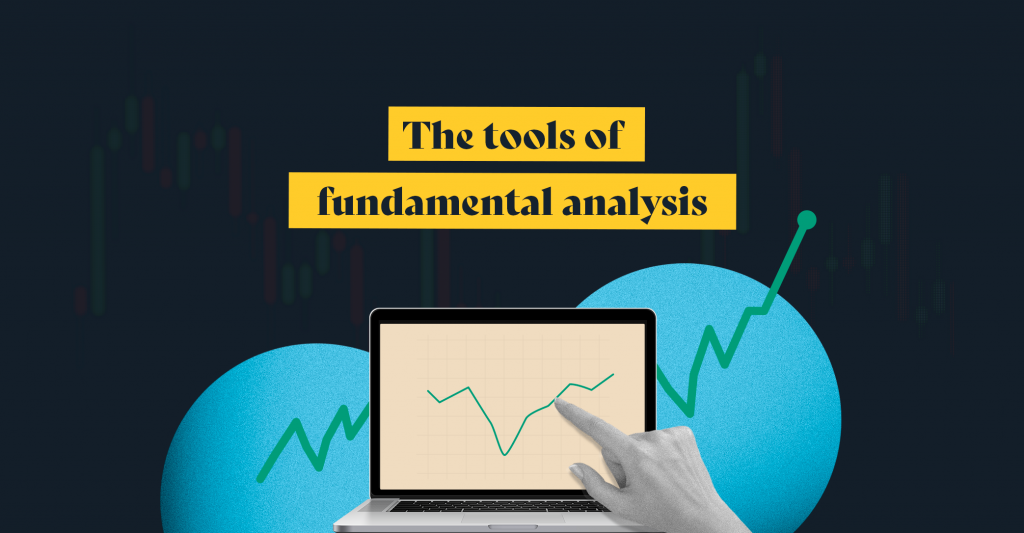Last Updated on Dec 20, 2022 by
As of FY 2021, there are over 7,462 companies listed in the Indian stock market. And trying to pick one or more stocks from 7,000+ might make you apprehensive about choosing the best stocks. But a useful approach is to simply understand their value. This is where investors make use of fundamental analysis to analyse a company. In this article, let us understand what fundamental analysis is, the tools of fundamental analysis, and its importance and usage.
Table of Contents
What is fundamental analysis?
While it is difficult to analyse and arrive at the value of anything, good investors are adept at forecasting trends. They use mathematical reasoning and factoring in other intangibles to define stock paths, owing largely to the unpredictable nature of things. A stock analysis method that uses these principles is fundamental analysis.
A note on fundamental analysis
Fundamental analysis and particularly quantitative fundamental analysis is the searchlight you can use to shine a light on stocks before they catch fire. In simpler terms, it measures the intrinsic value of a stock by studying qualitative and quantitative factors affecting it.
What is the intrinsic value of a stock?
Intrinsic value is the value of a stock as determined by qualitative and quantitative methods of fundamental analysis. The intrinsic value might be higher or lower than its actual market value.
Quantitative analysis and its significance
In quantitative analysis, you justify buying stocks by studying the underlying numbers that make a successful company. Simply put, stock prices and shares are numbers. Investment is about maximising those numbers; these factors depend on the company’s numbers.
“XYZ has good numbers” is common speak for investors while assessing the performance of a company. Quantitative analysis studies these numbers, particularly the financial details of a company, to improve the investor’s chances of hitting on a successful stock.
What are the tools used in the quantitative fundamental analysis?
From earnings and financial reports to financial ratios, there are a number of tools used in the quantitative analysis as discussed below.
Financial reports
1. The balance sheet
The balance sheet of a company contains its assets and liabilities. You can also refer to it as a business’s net worth. Assets are company-owned and can include things like machinery, equipment, office space, copyrights, holdings and more. Liabilities are what it owes to others like debt and equity. High debt or equity usually leads to long-term complications, while a growing company maximises current assets and acquires new ones.
Check that the company has, or is growing towards a balance sheet where its assets keep growing more than its liabilities.
2. Profit and loss statement
These statements consist of the revenue and expenses of a company. For example, Google’s revenues would be money received through advertisements and income device sales, play store tax, and so on. Its expenses would include outgoing money through payments towards employees, taxes to the government and so on.
Profit/Loss = Revenue – Expenses
You need to look for companies whose revenues comfortably exceed their expenses. You should also note that revenues must come from ‘core’ sources as they have greater stability. Google obtained over 70% of its revenue from advertisements (core source) in 2018.
3. Cash flow statements
They are detailed reports of cash that moved in and out of a business account in a financial year. Cash flow statements measure the cash-based transactions a company makes in a year, including investments. Look for companies that finance most of their requirements through non-cash flow activities, as lesser cash expenditure usually implies a low-risk business.
Apart from these, some companies also include a statement of change in equity and write notes to the shareholder on their positions. Keep an eye out for companies with complete transparency in all the above reports, so you are not misled by false or lack of financial information.
Understanding a company’s financial reports can differentiate between a risky buy and a confident one. Tickertape Stock Screener and Stock Pages give quantitative data regarding a company’s financials, like income statements, balance sheets, and cash flow. You can filter these statements with over 150 filters listing companies based on total assets, total debt, free cash flow, raw materials, and employee cost and make confident decisions.
Earnings
Simply put, earnings are the money that a company makes. However, you may know them as net income, bottom line or profit; they all mean the same. Take the case of Bata. Subtract all the costs required to produce their footwear, like manufacturing costs, cost of goods acquired, and inventory from their income from sales and franchises, and you will get their earnings (profit).
Thus, you must invest in companies that have high earnings sustained over a period of time. Higher profits are good business. It is also the same for investment and economics in general.
1. Quarterly earnings
Companies release quarterly reports detailing earnings, earnings per share and earnings from current operations for the most recent quarter. This indicates the current standing of a company.
2. Projected earnings
These are notoriously difficult to predict accurately. They are calculated by subtracting forecasted expenses from forecasted income. You can use a company’s financial statements from the current quarter to gauge how it might grow over the next ones.
Investors must pay close attention to profit as it is a key driver of stock value. Strong and sustained earnings are the most important denominators of a successful business. Low earnings force the company to borrow and incur further liabilities to survive, while increased profits make people invest in their stocks. This influx raises their stock price, which again pushes up their earnings.
You can find such companies using Tickertape Stock Screener to create your custom buy/sell list. Use filters to list down companies based on growth metrics like Historical Earnings and Revenue Growth from 1 yr to over 5 yrs to land yourself solid stock options.
Financial ratios
Financial ratios are another important tool in quantitative analysis. They offer a clearer view of the company’s financials concerning profitability, expenses, equity, etc.
1. Earnings per share (EPS)
These are the earnings of a company divided by the number of shares of the company. Look for companies with high earnings per share so that when you decide to sell, the price of each share will be substantial, boosting your returns.
2. Price-to-earnings (P/E) ratio
This is the ratio of the share price and the EPS of a company. Essentially, it indicates how much you need to pay to get Rs. 1 of a company’s earnings. Ensuring a low P/E ratio will mean you spend less of your earnings for more of the company.
3. Return on equity
Use return on equity shares to assess the profitability of a company generated by using the shareholders’ money. Divide the net income/earnings/profit by equity shares of investors to assess this metric. Make sure you choose companies with a high return on equity to maximise your returns.
4. Price-to-book (P/B) ratio
It compares a stock’s book value to its market value. It is calculated by dividing the stock’s last closing price by its previous quarter’s book value per share. Where book value is the cost of each asset minus its cumulative depreciation.
In simple terms, the P/B ratio tells us what the company will be left with after repaying its liabilities and liquidating the assets. If the P/B ratio is more than one, the stock is overvalued, and if it’s less than one, it is undervalued.
5. Price-to-sales (P/S) ratio
It is a ratio of a company’s stock price to its revenue. A higher P/S ratio means overvaluation, while a lower value means undervaluation.
6. Dividend payout ratio
It is calculated by dividing the total amount of dividend by the net income of the company. It tells how much a company has earned and how much it is giving out as a dividend.
7. Dividend yield ratio
It is calculated by dividing the annual dividend by the current stock price. This ratio tells what a company pays as a dividend relative to its share price.
Importance of financial analysis tools
Fundamental analysis of stocks helps you determine the fair value of a stock. You can evaluate the performance and health of an organisation. It is essential to check key numbers, the business model of a firm, and its management while investing.
Click here to read more about the fundamental analysis of a stock
How to find fundamental analysis tools?
All the fundamental analysis tools are available on the company’s website, or if you are looking at more than one company, then Tickertape is here! You can log in to Tickertape and search for stocks you want to analyse. You get a company’s key information, like forecasts, financials, holdings, etc. You can also use Tickertape Stock Screener to filter the best stocks in India based on your preferred parameter.
Conclusion
You need tools to build anything, and the same applies to building wealth. As of March 2022, India became the 5th biggest equity market with a market cap of $3.21 tn. Sure, we might be far from China with $11.52 tn in the 2nd position and the USA market at $47.32 tn in the 1st position, but we’re definitely in the top 5. Well, top 5 or not, 7,000 stocks is a big number to choose from, but with a determined, filtered focus on your goals, quantitative analysis will help you make stock-picking fundamentally easier.
FAQs
1. What is the difference between fundamental analysis and technical analysis?
Fundamental analysis of a stock is about analysing a company and its numbers. In contrast, technical analysis looks at the stock’s price movement and predicts the future price.
2. What are the types of fundamental analysis?
Fundamental analysis is classified into two types: qualitative and quantitative. Qualitative analysis determines the company, consumer behaviour, demand, and popularity. In contrast, quantitative analysis involves analysing a company’s reports, balance sheets, quarterly performance, annual performance, debt, etc.
- Long Term Mutual Funds in India (2025) - Oct 29, 2025
- Muhurat Trading in 2025 – Meaning, Benefits, Latest Date and Timings - Oct 8, 2025
- How To Withdraw Mutual Funds? - Jun 6, 2025





